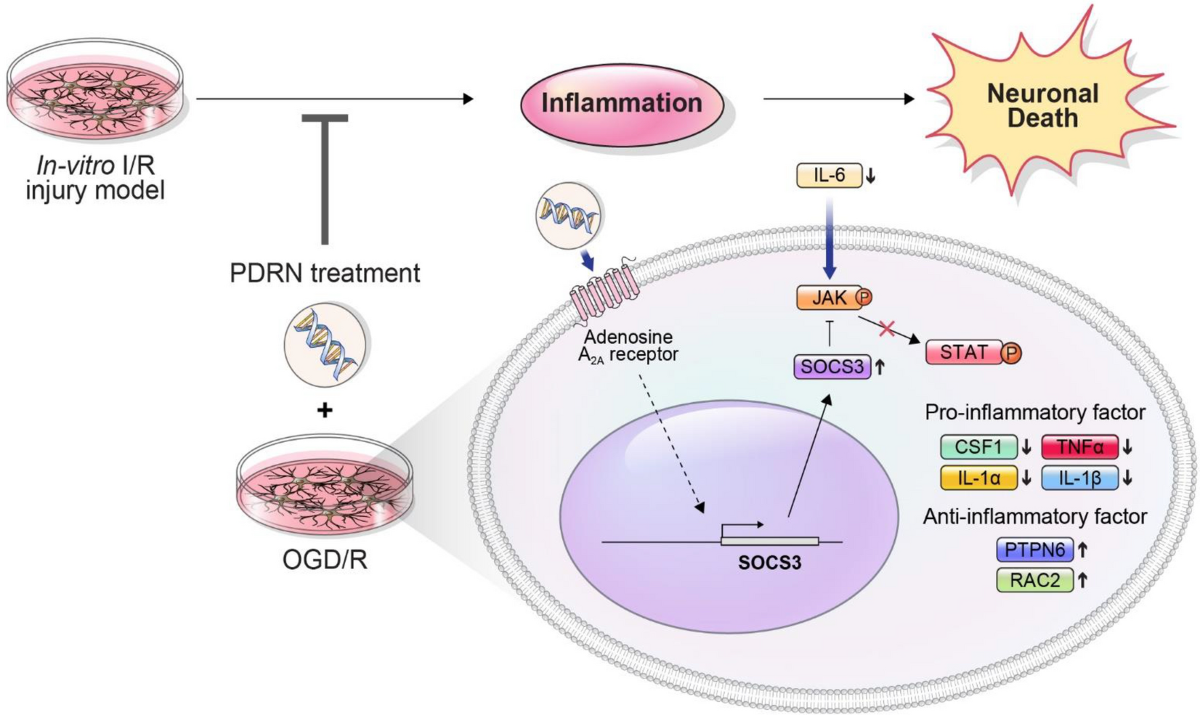What are the benefits of polydeoxyribonucleotide in skincare?
Have you heard of Polydeoxyribonucleotide (PDRN)? This powerful ingredient is currently one of the most talked-about trends in the skincare industry. A growing number of skincare products on the market are now formulated with PDRN, and for good reason. If you’re planning to develop your own private label products, staying informed about such trending ingredients is essential for creating competitive and appealing offerings.
In this article, we will explore what PDRN is, how it works, and why it has gained so much attention.We’ll also explore the key benefits of incorporating PDRN into skincare formulations, and how it can add value to your brand.
What is PDRN?
PDRN (Polydeoxyribonucleotide) has been making waves in the beauty industry in recent years for its remarkable regenerative and skin-repairing properties. This cutting-edge ingredient is a low molecular weight DNA fragment derived from the sperm cells of salmon, a species known for its biocompatibility with human skin.
Yangge Biotech Polydeoxyribonucleotide Powder Feature:
1. High-purity 90% PDRN from salmon DNA
2. Clinically backed skin regeneration and tissue repair properties
3. Promotes cell proliferation, collagen synthesis, and wound healing
4. Water-soluble, easy to formulate into cosmeceutical or injectable products
5. Free from harmful additives or preservatives
6. Certified organic and clean-label friendly

| Source |
|
| Characteristic |
|
| Function |
|

The Science Behind PDRN: How Does It Work?
PDRN exerts its effects primarily through cellular repair and regeneration. It functions as a nucleotide-based bio-stimulator, meaning it encourages the skin to heal and rejuvenate itself naturally. Below are some of the core mechanisms through which PDRN enhances skin health:
1. Activation of the A2A Receptors
One of the critical ways PDRN functions is by binding to adenosine A2A receptors on the surface of skin cells. This binding triggers a cascade of biological responses, including:
-
Increased blood flow to the skin, ensuring better oxygenation and nutrient delivery.
-
Enhanced fibroblast activity, leading to improved collagen and elastin production.
-
Reduction in inflammation, making it particularly beneficial for sensitive or damaged skin.

2. Stimulation of Fibroblasts and Collagen Production
Fibroblasts are crucial cells in the dermis responsible for producing collagen and elastin—two proteins essential for maintaining firm, youthful skin. By stimulating fibroblast proliferation, PDRN effectively:
-
Increases skin elasticity.
-
Reduces the appearance of fine lines and wrinkles.
-
Promotes a smoother and plumper skin texture.

3. Enhanced DNA Repair and Cell Regeneration
Skin aging and damage occur when DNA repair mechanisms slow down. PDRN serves as a key component in nucleic acid metabolism, assisting in cellular repair and DNA synthesis. This process accelerates skin renewal, helping to:
-
Heal wounds, scars, and acne lesions faster.
-
Reverse sun damage and pigmentation.
-
Improve overall skin tone and texture.

Key Benefits of PDRN in Skincare
PDRN functions as a powerful skin-rejuvenating agent. It works by stimulating cell regeneration and enhancing fibroblast activity, which in turn promotes collagen synthesis—essential for maintaining firm, elastic, and youthful-looking skin. As a result, it helps reduce the appearance of fine lines and wrinkles, while also improving skin texture and elasticity over time.
Beyond its anti-aging capabilities, PDRN is also prized for its soothing and healing effects. It helps strengthen the skin’s natural barrier, making it highly effective in addressing issues such as chronic dryness, sensitivity, redness, and post-procedure recovery. Its ability to accelerate tissue repair makes it a go-to ingredient in both daily skincare and clinical-grade products, including serums, creams, and ampoules.
Thanks to these wide-ranging skincare benefits and its excellent safety profile, PDRN has become a popular hero ingredient in high-performance skincare lines across Asia and is rapidly gaining recognition worldwide. From luxury cosmetic brands to medical aesthetic products, PDRN is now synonymous with innovation in skin regeneration and holistic skin health.

Popular Uses of PDRN
PDRN is available in various formats, from injectable treatments to topical products. Its primary applications include:
- Skin Rejuvenation: PDRN-based injectables are used to improve skin elasticity, reduce fine lines, and enhance overall radiance.
- Hydration Boost: Many PDRN products focus on delivering deep hydration to combat dryness and improve skin texture.
- Scar and Pore Treatment: PDRN’s regenerative properties make it effective for reducing the appearance of scars and tightening pores.

What types of products can PDRN be formulated into?
With PDRN, the following items could be suitable for customers, making it easy for them to incorporate into their skincare routine:
| Serum |
|
| Sheet mask |
|
| Cream |
|

Who Should Use PDRN?
PDRN is suitable for various skin types and concerns, including:
-
Aging skin (fine lines, wrinkles, and loss of elasticity)
-
Acne-prone or scarred skin
-
Dehydrated or dull skin
-
Sensitive or redness-prone skin
-
Post-procedure recovery

Conclusion
PDRN represents an exciting advancement in skincare, bridging the gap between medical science and cosmetic beauty. While there’s no harm in incorporating PDRN-based skincare products into your routine, the most effective and clinically proven results come from injectable PDRN treatments.
For Polydeoxyribonucleotide powder (PDRN) there are different specification for your choice, we can provide 10-30g of free samples, US warehouse in stock of 500kg of each month for the market of the global. certificate of analysis (COA), MSDS, specification sheet, pricing quotation is obtainable upon your request.
If you have any question or need any documents, welcome to contact us by e-mail: info@yanggebiotech.com
References
Jang, D. H., & Kim, S. H. (2020). Clinical Efficacy of PDRN in Anti-Aging and Skin Healing Treatments. International Journal of Dermatology & Cosmetology.
Kim, S., et al. (2022). The Role of Polydeoxyribonucleotide (PDRN) in Skin Regeneration and Wound Healing: Mechanisms and Clinical Applications. Journal of Dermatological Science.
Lee, Y. J., et al. (2018). Effects of Polydeoxyribonucleotide on Fibroblast Proliferation and Wound Healing. The Journal of Aesthetic Medicine.
Send Inquiry
Related Industry Knowledge
- Easy Recipes with Yeast Extract Beta Glucan Powder for Better Nutrition
- Boosting Health with Corn Protein Peptide: A Nutritional Powerhouse
- The Latest Research on Glutathione Benefits
- Psylliumus Hk: The Superfood for Optimal Health
- Taurine Supplement UK for ADHD
- Sunflower Lecithin Powder and Liquid Benefits
- Glutathione Tablets: Health Benefits
- Lions Mane Powder: The Mushroom Benefits
- Is almond protein powder good for weight loss?
- Premium Hydrolyzed Keratin: Optimal Hair & Skin


